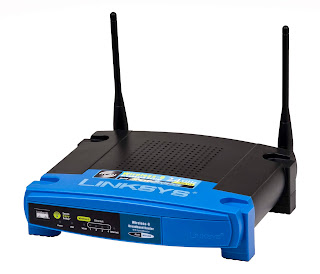full form Wifi wireless fidelity is a trademark of the non-profit Wi-Fi Alliance, which used the term Wi-Fi certified for those products. Who successfully complete the inter-certification test
It is a technology similar to Wireless Local Area Network (WLAN). WiFi allows computers and other devices to communicate over wireless networks.
Wi-Fi can be used on many types of devices such as personal computers, video game consoles, smartphones, digital cameras, tablet computers, smart TVs, etc.
You can use WiFi by turning on hotspots within the 20 m (66 ft) range. This is less secure than a wired connection because the intruder does not need a parallel connection to use Wi-Fi.
This technology was invented in 1994 by CSIRO. And included portions of the 802.11a, 802.11g, and 802.11n Wi-Fi standards. And thus O'Sullivan is also credited with inventing the WIFI.
Full-Form Of WiFi
full form - Wireless Fidelity WiFi is a wireless networking technology that provides wireless high-speed Internet and uses mostly radio waves to provide network connections.
What Is WIFI
WiFi is also a local area wireless technology in the form of WiFi. This allows an electronic device to exchange data or connect to the Internet using the ISM radio band. |
| source: Wikipedia |
It is a technology similar to Wireless Local Area Network (WLAN). WiFi allows computers and other devices to communicate over wireless networks.
Wi-Fi can be used on many types of devices such as personal computers, video game consoles, smartphones, digital cameras, tablet computers, smart TVs, etc.
You can use WiFi by turning on hotspots within the 20 m (66 ft) range. This is less secure than a wired connection because the intruder does not need a parallel connection to use Wi-Fi.
WIFI Inventor
Dr. John O'Sullivan is an Australian electrical engineer. Due to which one of his inventions took place with key technology partners. Which made wireless LAN fast and reliable.
 |
| source : Wikipedia |
This technology was invented in 1994 by CSIRO. And included portions of the 802.11a, 802.11g, and 802.11n Wi-Fi standards. And thus O'Sullivan is also credited with inventing the WIFI.
Wi-Fi Protocol
IEEE 802.11 can be called a part of the IEEE 802 set of LAN protocols, and media access control (MAC) and physical layer (PHY) protocols for implementing wireless local area network (WLAN) Wi-Fi computer communications in different frequencies.
 |
| source: Wikipedia |
Why Wifi Is Used
If without Wi-Fi, we must connect each network device to the network with a network cable to turn on the network. It is necessary to have a cable for every computer and network device. Makes installation and setup more difficult, in particular, an in-house network can be run with the help of wifi without proper wiring.
This also makes mobility (such as moving around the home or office) impossible. With Wi-Fi, any compatible device with the proper reception and access rights can connect that device to the network without cable.
Wi-Fi is a wireless network that uses one of the IEEE 802.11 wireless standards to obtain a wireless connection to a network. Sends signals using WAP or WEP encryption to send and receive signals from wireless devices on the network.
An in-house wireless network uses a wireless access point/router. Antennas shows a wireless access point and is an example of how most home users connect to the Internet using a wireless device.
Devices using Wi-Fi
Today, many devices are currently available in the market that connects to the Internet using Wi-Fi. Below is a list of some modern Wi-Fi devices you can find at home or office.
- Computers.
- Digital photo frames.
- DVD and Blu-ray players.
- DVR and set-top box
- Home automation devices.
- Printer.
- Scales.
- Smart TV.
- Smartphone.
- Speakers and stereo systems.
- Security cameras.
- Tablet.
Advantages of wi-fi
The popularity of wireless networks is primarily a piece of advice for their convenience, cost, and ease of connecting with other networks and network components. Most computers sold to consumers today have all the necessary wireless LAN technology.
Facility
With the increasing saturation of laptop design computers, this is particularly worthy.
Like (at a home or office).
While walking
With the development of wireless networks in public, users can use the Internet well outside of their normal work environment. For example, coffee shops, library hotels, college bus rails provide wireless connections to the internet with little or no cost to their customers.
Productivity
Users connected to a wireless network can maintain an almost constant consistency with their desired network. Because they move from one place to another. For a business, this means that an employee can be more productive by chance because his job is completed from any convenient location.
Deployment
The initial setup of infrastructure-based wireless networks requires much less than a single access point. On the other hand, the additional cost and complexity of real critical cables in wired networks are being run at many locations.
Cost
Wireless networking hardware is the simplest increase compared to wired counterparts. This potentially increased cost leads to greater savings in the cost and effort associated with running a physical cable.
Dis-Advantages of wi-fi
Security
To counter security, wireless networks may choose to use some of the various encryption technologies available. Some of the more commonly used encryption methods, however, are known to have vulnerabilities that a dedicated adversary can consent to.
Range
Typically the typical range of 802.11g networks with some standard devices is on the order of tens of meters. Sufficient for the typical house, it would be very little in a large structure. To get additional range, one needs to buy repeaters or additional access points. Costs for these items can quickly add up.
Speed
Speed is slowest on most wireless networks (at 1–100 Mbps). Slower than a normal wired network (100 Gbps to several Gbps). However, in special environments, a wired network may be required.



0 Comments